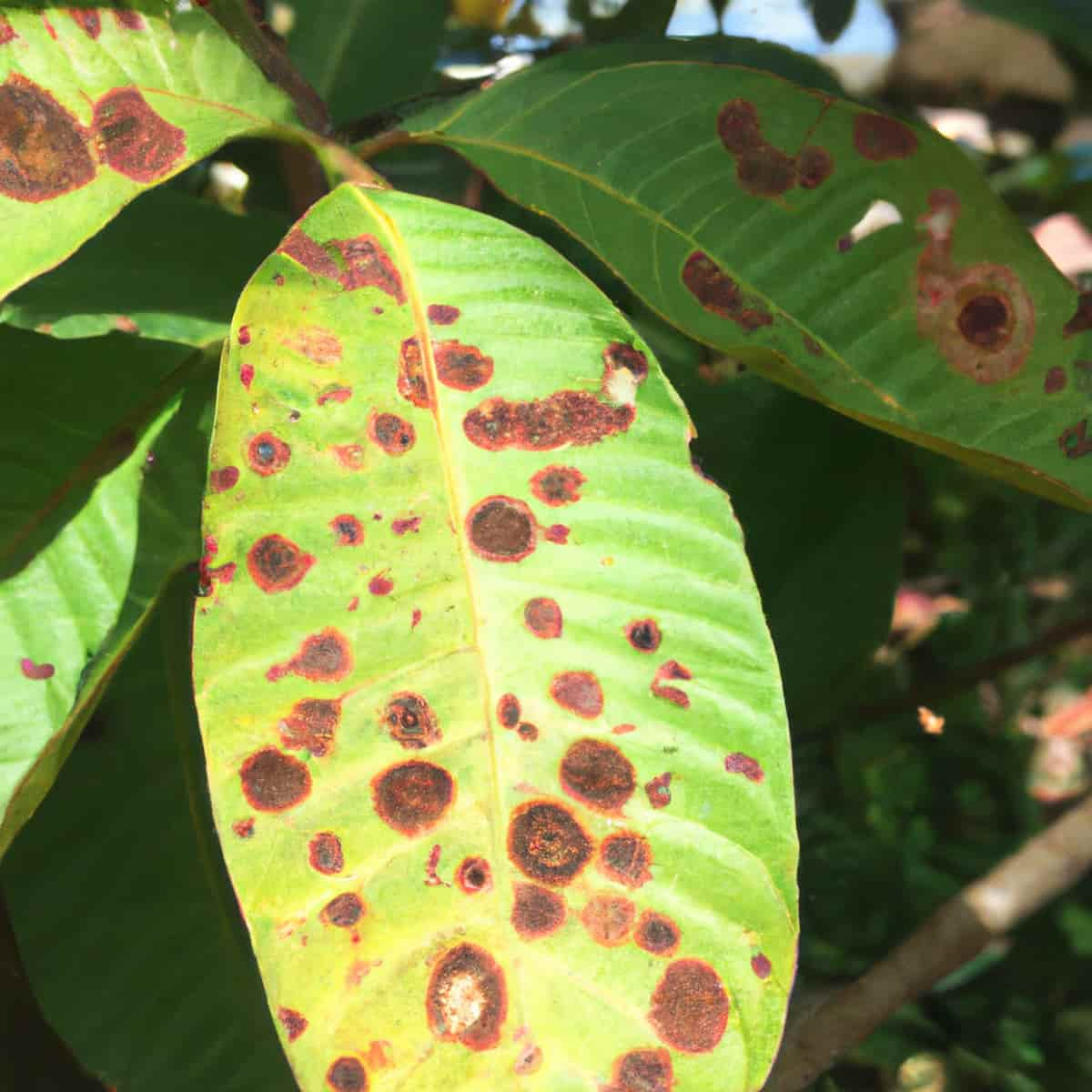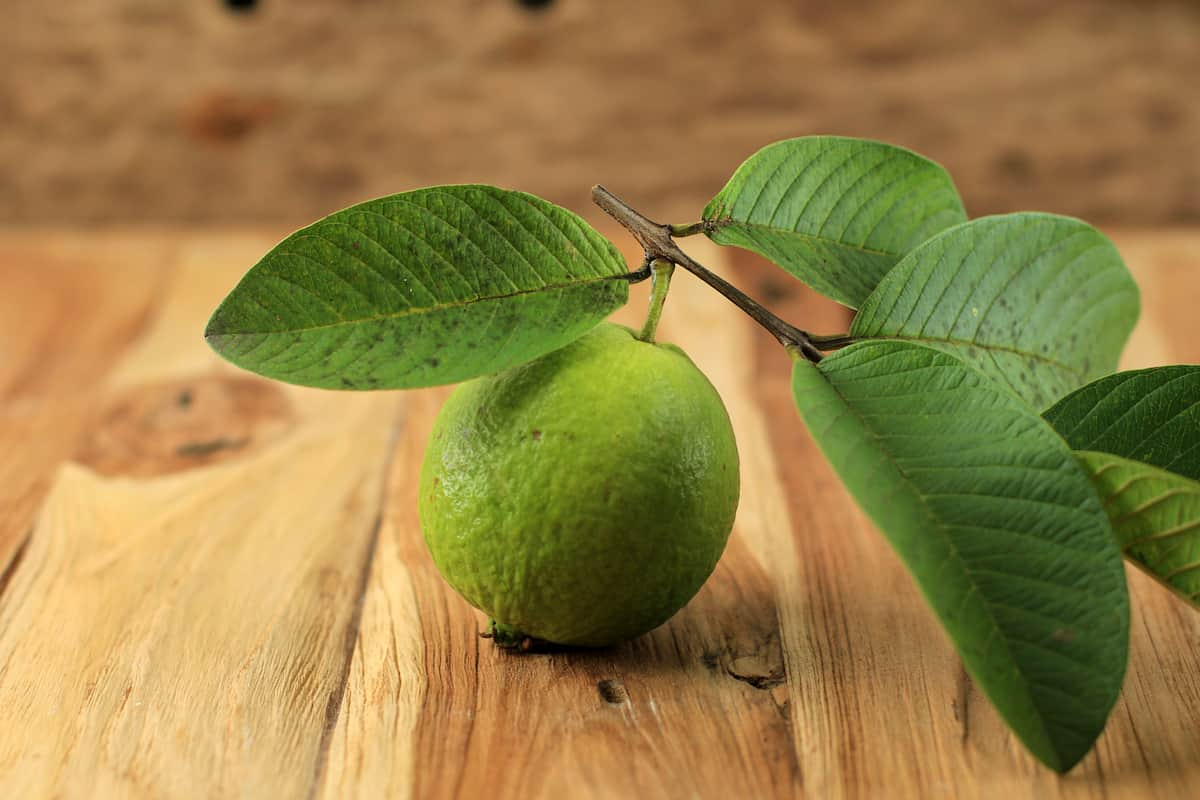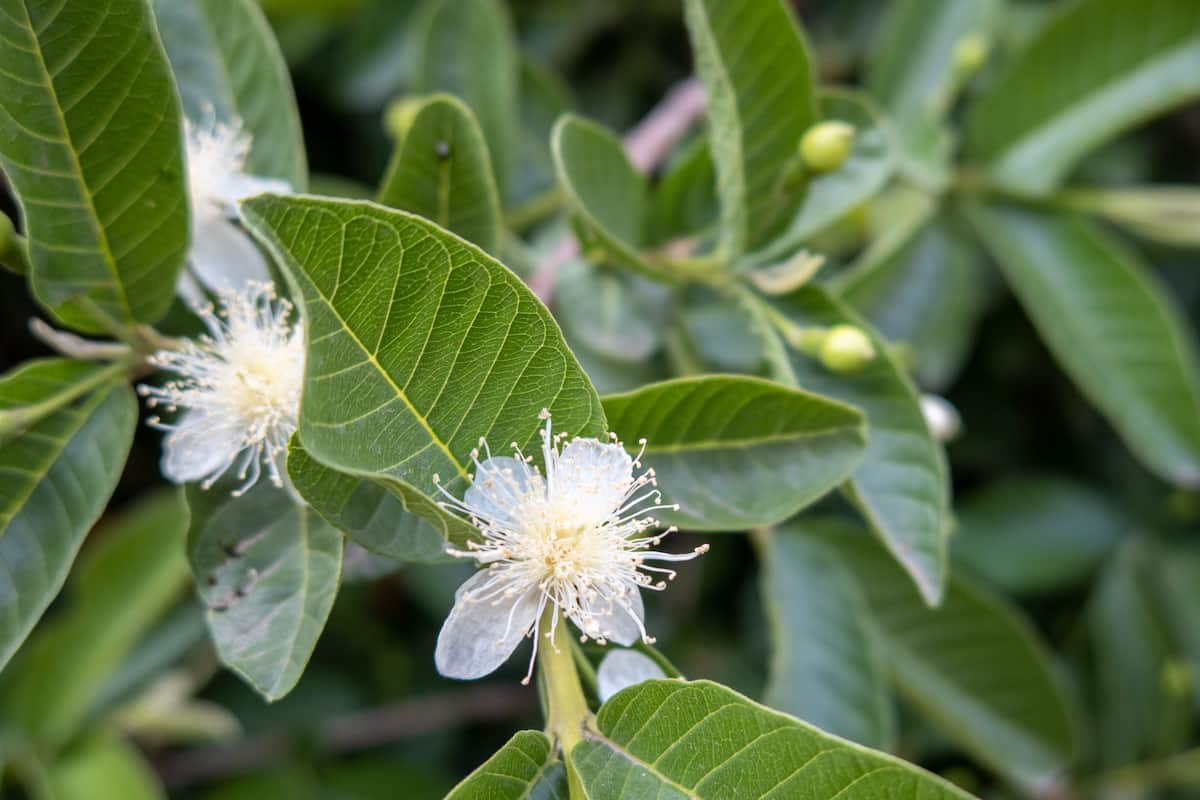Algal Leaf Spot Disease is a common problem that affects many plants, including guava. This disease is caused by the alga Cephaleuros, which can survive on plant debris and other surfaces for extended periods. The pathogen spreads through wind and water, and it can cause significant damage to plant health and productivity. Effective management of this disease requires an understanding of its biology and life cycle, as well as the implementation of appropriate control measures.

Algal Leaf Spot Disease Management in Guava
The Causal Organism of Algal Leaf Spot Disease
The causal organism of Algal Leaf Spot Disease is a type of alga known as Cephaleuros. This pathogen is a member of the green algae family and can infect thick-leafed plants during the summer when rain spreads the pathogen. The colonies of Cephaleuros can survive on fallen leaves for a time and spread to growing leaves, causing the formation of brownish-green to soft black spots.
The Disease cycle of Algal Leaf Spot Disease
- Infection: The disease starts when the alga infects immature guava leaves during the early spring flush. The alga enters the leaf tissue through natural openings or wounds.
- Lesion formation: Once inside the leaf tissue, the alga starts to grow and multiply, causing the formation of minute, shallow brown velvety lesions on the leaves. These lesions can appear on the leaf tips, margins, or areas near the mid-vein. The lesions are 2-3 mm in diameter as the disease progresses.
- Sporulation: The alga produces spores within the lesions, dispersed by wind, water, or insects to other parts of the plant or nearby plants.
- Secondary infections: When the spores land on susceptible tissues, such as immature fruits or leaves, they can cause secondary infections and start new lesions.
- Disease development: As the disease progresses, the lesions on leaves may vary from tiny spots to big patches, which may be crowded or scattered. On unripe fruits, the lesions are nearly black. As fruits grows, lesions get lowered and get cracked frequently on older blemishes due to the enlargement of fruits. Lesions are usually smaller than leaf spots and are darkish green to brown or black.
Causes/Conditions Favorable for Algal Leaf Spot Disease Spread in the Field.
- Wet and humid conditions: The disease thrives in moist environments, and prolonged periods of high humidity and rainfall can create conditions ideal for its growth and spread.
- Poor air circulation: Limited air movement and ventilation can create a microclimate that favors the development and spread of the disease.
Symptoms of Algal Leaf Spot Disease
- Minute, shallow brown velvety lesions appear on immature guava leaves during the early spring flush.
- The lesions are usually found on leaf tips, margins, or areas near the mid-vein of the leaf.
- As the disease progresses, the lesions enlarge to 2-3 mm in diameter and may vary from specks to big patches that can be crowded or scattered.
- On immature fruits, the lesions are nearly black.
- As the fruits enlarge, the lesions become sunken and frequently cracked on older blemishes.
- The fruit lesions are usually smaller than those on leaves and can be darkish green to brown or black.
In case you missed it: Cercospora Leaf Spot Management in Chilli Pepper: Symptoms, Identification, Treatment, Chemical, Biological, Natural, and Organic Control

Algal Leaf Spot Disease Management in Guava by Cultural method
- Pruning: Proper pruning helps to enhance air circulation within the canopy and sunlight penetration, reducing humidity and spreading the disease. It is recommended to prune the guava trees during the dormant season.
- Weed management: Weeds can compete with guava plants for nutrients and moisture, making them more susceptible to Algal Leaf Spot Disease. Regular removal of weeds from around the guava plants can help reduce the disease’s spread.
- Tree spacing: Wider tree spacing helps to increase air circulation and sunlight penetration, reducing humidity and spreading the disease.
- Regular monitoring: Regular monitoring of the guava plants for the presence of the disease should be done to detect any signs of a recurrence early and take prompt action to prevent its spread.
Algal Leaf Spot Disease Management in Guava by Chemical method
- Apply Copper oxychloride 0.25% spray on the affected leaves and fruits. The spray should be applied uniformly to ensure complete plant surface coverage. Repeat the application regularly, as the manufacturer or local agricultural authorities recommend.
- It is important to note that chemical control should not be the sole method of managing Algal Leaf Spot Disease. Other preventive measures, such as improving growing conditions, maintaining good hygiene, and avoiding mechanical damage, should also be implemented to ensure effective disease control.
Preventive Measures for Control of Algal Leaf Spot Disease
- Ensure good air circulation around the guava plants by orientating the rows appropriately to allow for good ventilation.
- Improve the growing conditions of the plants to reduce stress on them.
- Avoid waterlogged soils by improving drainage in the planting area.
- Water the plants early in the day to ensure the foliage dries quickly.
- Avoid overhead irrigation when possible to prevent the spread of the disease.
- Apply mineral fertilizers when growth is poor to maintain healthy plants.
- Use sprays containing potassium phosphate to control the disease.
- Ensure that there is adequate space between plants to allow for air circulation and rapid drying of leaves and fruits.
- Remove weeds around the guava plants to reduce competition for nutrients and moisture.
- Avoid causing mechanical damage to the plants, which can lead to lesions that can be a potential entry point for the disease.
In case you missed it: Management of Bacterial Leaf Spot in Chilli/Peppers: Symptoms, Treatment, Chemical, Biological, Natural, and Organic Control

Conclusion
Algal Leaf Spot Disease can be a challenging problem for growers, but it can be effectively managed through cultural and chemical control methods. Maintaining good plant health and hygiene practices, along with appropriate pruning and fertilization, can help prevent the pathogen’s spread.
Chemical control measures, such as the use of copper oxychloride, can also be effective in reducing the severity of the disease. By implementing these control measures, growers can reduce the impact of Algal Leaf Spot Disease on plant health and productivity and ensure the continued success of their operations.
- Deworming Schedule for Dogs/Puppies: A Beginners Guide
- How to Prevent and Control Parasites in Goats
- Beneficial Insects in Pest Management
- Natural Solutions for Pest Control in Flower Gardens
- Types of Fungicides Used in Agriculture
- Common Issues in the Fruit Development Stage of Pomegranate Farming
- Fruit Development Issues in Papaya: Easy Solutions and Treatment
- Soil-Borne Diseases and How to Protect Your Plants
- Practices to Prevent Disease Spread in the Garden